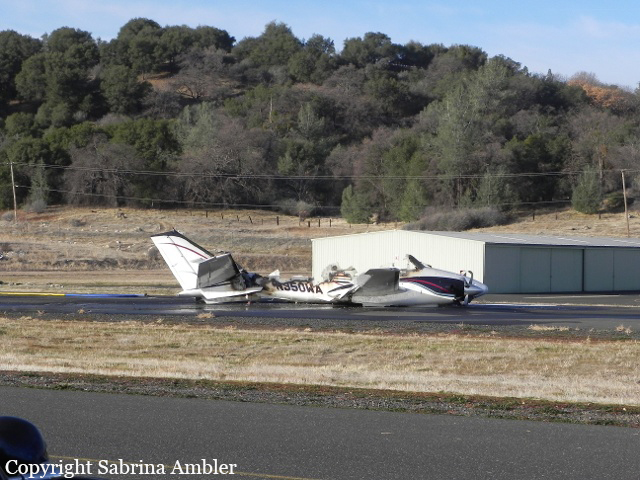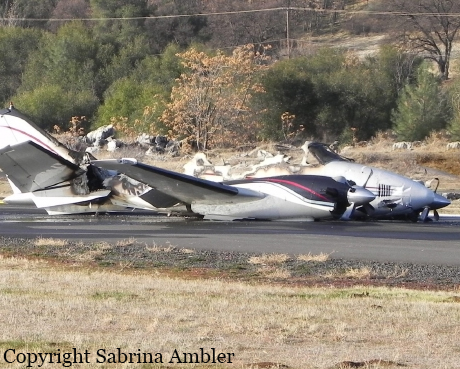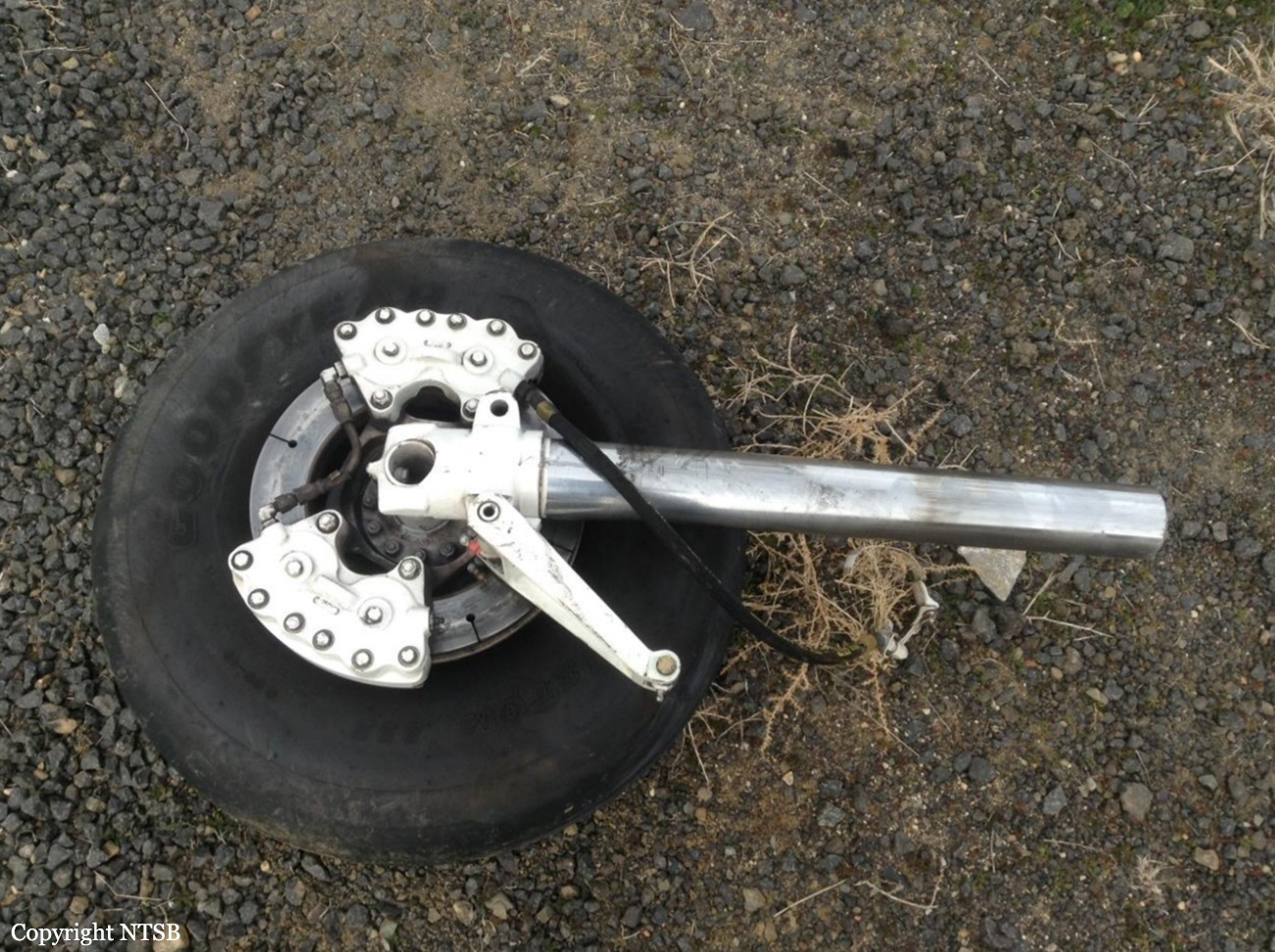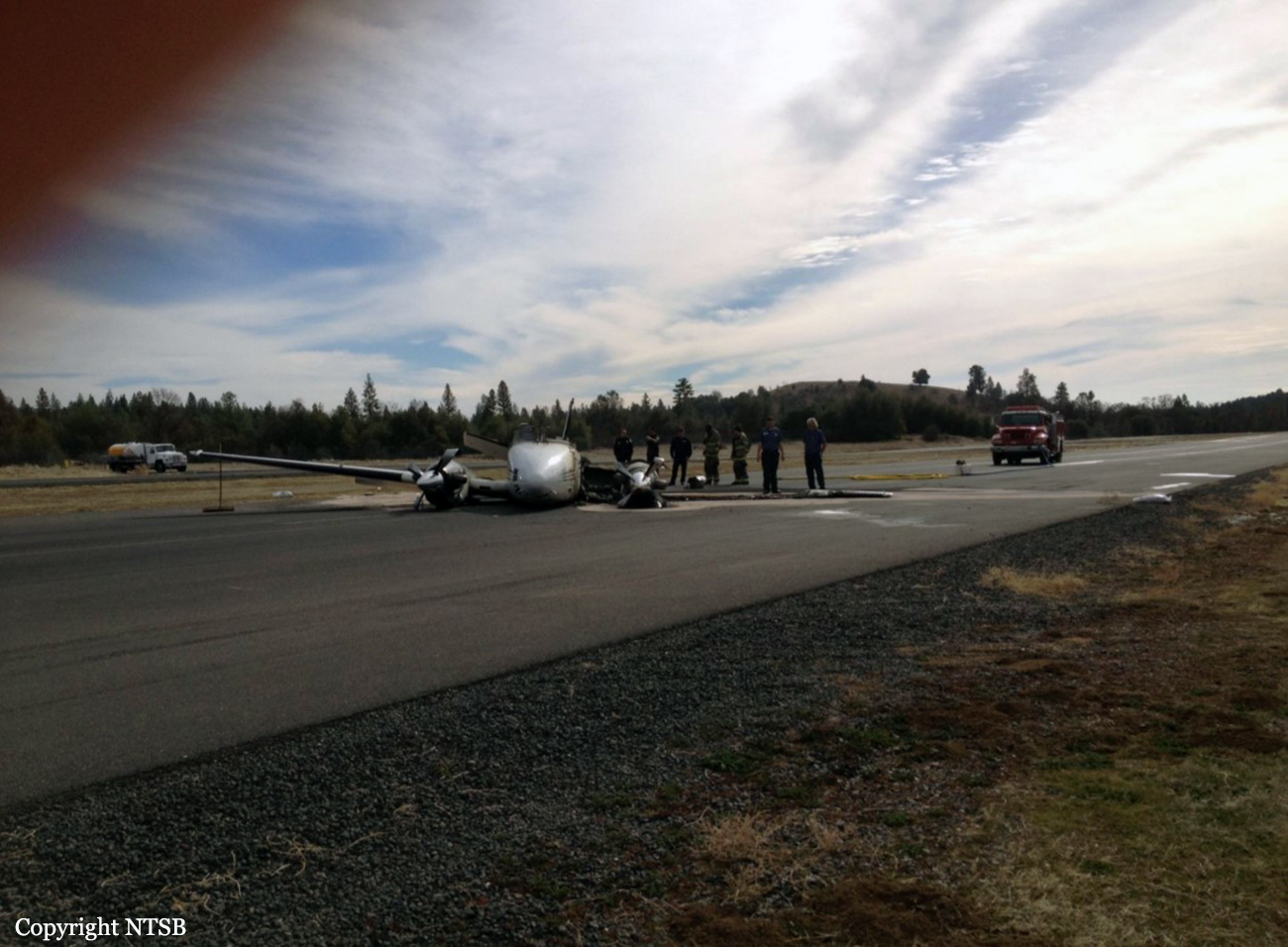Country
Crash of a Beechcraft C90 King Air in Villavicencio: 5 killed
Date & Time:
Mar 12, 2014 at 0633 LT
Registration:
HK-4921
Survivors:
No
Schedule:
Bogotá – Araracuara
MSN:
LJ-721
YOM:
1977
Crew on board:
2
Crew fatalities:
Pax on board:
3
Pax fatalities:
Other fatalities:
Total fatalities:
5
Captain / Total hours on type:
538.00
Copilot / Total hours on type:
483
Aircraft flight hours:
9656
Circumstances:
The twin engine aircraft departed Bogotá-El Dorado Airport at 0600LT on an ambulance flight to Araracuara, State of Caquetá, carrying two doctors, one patient and two pilots. Fifteen minutes into the flight, the crew contacted ATC, reported problems and was cleared to divert to Villavicencio. On approach to Villavicencio-La Vanguardia Airport, the aircraft stalled and crashed in a wooded area parallel to a road, bursting into flames. The aircraft was destroyed by a post crash fire and all five occupants were killed.
Probable cause:
The following factors were identified:
- The lack of technical knowledge published in the POH for the execution of the pertinent actions during the failure of the engine in flight, together with the unwise decisions made by the crew in that situation.
- The haste of the crew members to land caused them to act in an uncoordinated manner and without the assertiveness required for the execution of the procedures contemplated by the manufacturer, the navigation charts and the published approach procedures.
- The omissions, reactions and deviations inappropriate to conduct the flight safely to the runway.
- The turning to the runway on the same side of the inoperative (critical) engine and maximum power on the operational engine during the unstabilized approach to the runway threshold which led to loss of control of the aircraft in low altitude flight.
- The lack of technical knowledge published in the POH for the execution of the pertinent actions during the failure of the engine in flight, together with the unwise decisions made by the crew in that situation.
- The haste of the crew members to land caused them to act in an uncoordinated manner and without the assertiveness required for the execution of the procedures contemplated by the manufacturer, the navigation charts and the published approach procedures.
- The omissions, reactions and deviations inappropriate to conduct the flight safely to the runway.
- The turning to the runway on the same side of the inoperative (critical) engine and maximum power on the operational engine during the unstabilized approach to the runway threshold which led to loss of control of the aircraft in low altitude flight.
Final Report:
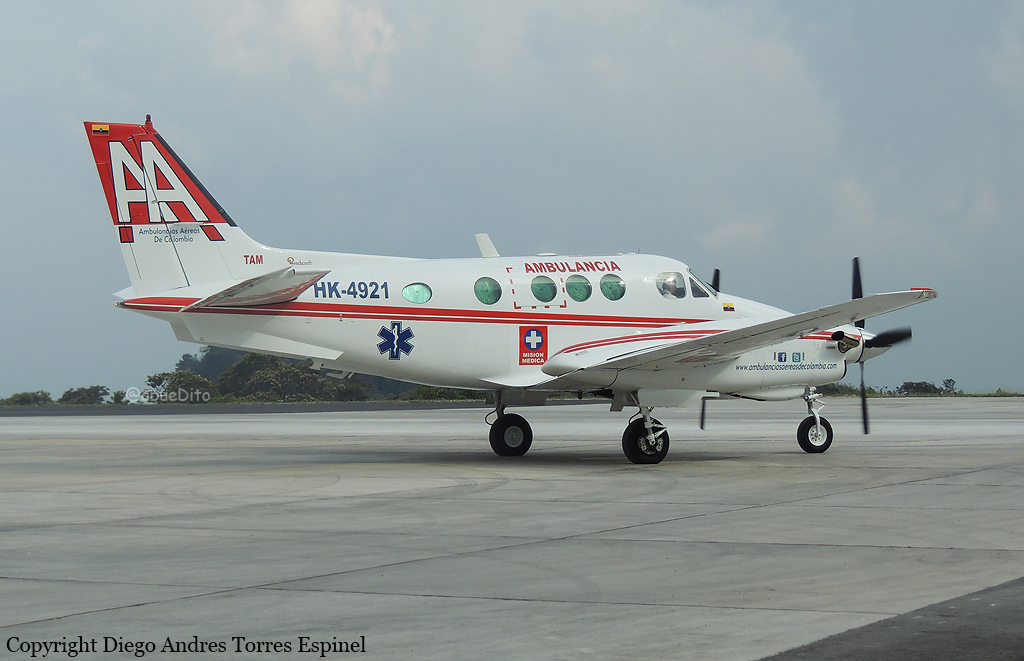


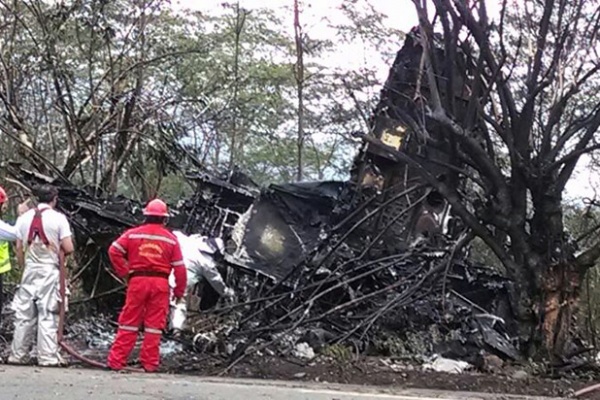
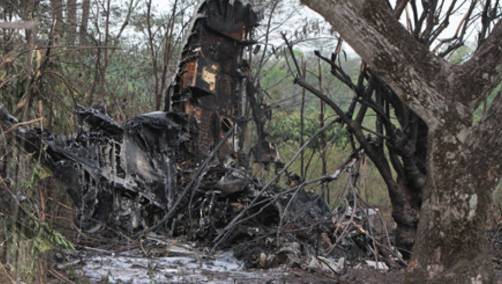
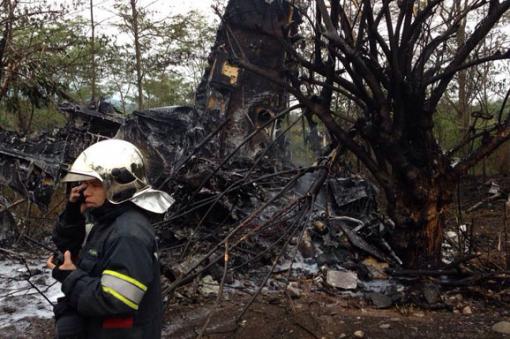
Crash of a Beechcraft 90 King Air in the State of Apure
Date & Time:
Mar 3, 2014
Survivors:
Yes
Crew on board:
2
Crew fatalities:
Pax on board:
0
Pax fatalities:
Other fatalities:
Total fatalities:
0
Circumstances:
The crew was performing an illegal flight with narcotics on board and entered illegally the Venezuelan airspace. The crew was forced to land in an open field by Venezuela Army Forces and the aircraft crashed, bursting into flames. While the aircraft was destroyed by a post crash fire, the fate of both occupants remains unknown.
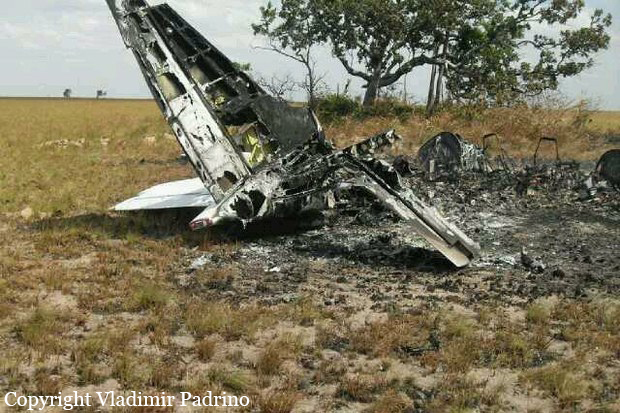
Crash of a Beechcraft C90GTx King Air in Lanseria: 3 killed
Date & Time:
Feb 3, 2014 at 0654 LT
Registration:
ZS-CLT
Survivors:
No
Schedule:
Johannesburg – Lanseria
MSN:
LJ-2011
YOM:
2011
Crew on board:
1
Crew fatalities:
Pax on board:
2
Pax fatalities:
Other fatalities:
Total fatalities:
3
Captain / Total hours on type:
101.00
Aircraft flight hours:
500
Circumstances:
The pilot and two passengers were planning to fly from Rand Airport to Lanseria International Airport (FALA) in the early hours of the morning with the intention to clear customs. It was still dark and the weather forecast thunderstorms with rain for most areas of Gauteng. Rand Tower requested clearance from FAOR approach before departure. The aircraft took off from Runway 29 following the clearance given and proceeded in a westerly direction. At 6500 feet above mean sea level (AMSL), Rand handed the aircraft over to Approach for further clearances. Reported visibility at FALA was 600m and the cloud base was 600 feet AGL. The pilot then requested a VHF Omnidirectional range (VOR) Z approach for Runway 07. He started the approach at 8000 feet and approximately 14nm from LIV. At 12nm and established on Radial 245 Approach handed him over to FALA. Once in contact with FALA the pilot was advised of the heading to turn to at missed approach point (MAP). At MAP the pilot did not have the runway in sight and advised tower that they were going around. They turned left 360° and climbed to 8000 feet as instructed by FALA. FALA handed them back to Approach for repositioning for Radial 245. Approach advised the aircraft that visibility at Wonderboom was better but the pilot said if not successful they would route to Polokwane. At 12nm the aircraft was handed over to FALA. During the descent, the pilot started repeating messages more than twice. Close to MAP the pilot indicated that he had the field in sight. FALA gave them landing clearance. Soon after, the pilot said he did not have it in sight. When FALA instructed him to go around and route Polokwane, the pilot came back on frequency indicating that the aircraft was in distress. After that, the tower heard a loud bang accompanied by black smoke from behind a hangar.
Probable cause:
The accident was the consequence of a stall in adverse weather conditions after the pilot suffered a spatial disorientation during a missed approach procedure.
Final Report:







Crash of a Beechcraft C90 King Air in Columbia
Date & Time:
Jan 27, 2014 at 0530 LT
Registration:
N350WA
Survivors:
Yes
Schedule:
Sacramento - Columbia
MSN:
LJ-762
YOM:
1978
Crew on board:
2
Crew fatalities:
Pax on board:
0
Pax fatalities:
Other fatalities:
Total fatalities:
0
Captain / Total hours on type:
1784.00
Copilot / Total hours on type:
2237
Aircraft flight hours:
9501
Circumstances:
The commercial pilot, who was the pilot flying (PF), and the airplane transport pilot, who was the pilot not flying (PNF), were conducting an aeromedical positioning flight. The pilots reported that, during a night approach, they visually identified the airport, activated the runway lighting system, and then canceled the instrument flight plan for a visual approach. The PNF reported that, after turning onto the final approach, the flaps were fully lowered and that the airplane was in a “wings level, stabilized approach.” The PF reported that he was initially using the vertical approach slope indicator (VASI) for guidance but that the airplane drifted below the glidepath during the approach, and he did not correct back to the glidepath. On short final, the pilots verified that the landing gear were in the down-and-locked position by noting the illumination of the three green landing gear indicator lights, and the airspeed indicator indicated 110 knots. Both pilots reported that the landing was “firm” and that it was followed by a loud bang and the subsequent failure of all three landing gear. The airplane slid on its belly for about 825 ft down the runway before coming to rest. Both pilots evacuated the airplane, which was subsequently consumed by a postaccident fire. Both pilots reported that the airplane was operating normally with no discrepancies noted. Postaccident examination of the wreckage at the accident site revealed that the airplane impacted the runway about 100 ft short of its displaced threshold. Broken components of the landing gear were located along the debris field, which extended about 565 ft beyond the initial impact point. It is likely that the PF's failure to correct and maintain the VASI glidepath after allowing the airplane to descend below the glidepath and the touchdown at a high descent rate resulted in a hard landing and the subsequent failure of all three landing gear.
Probable cause:
The pilot’s unstabilized night visual approach, which resulted in a hard landing and the collapse of all three landing gear.
Final Report:

